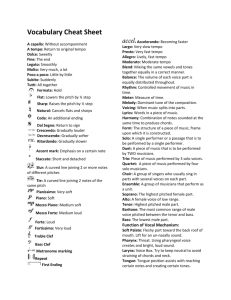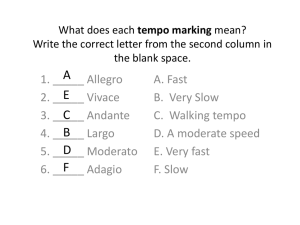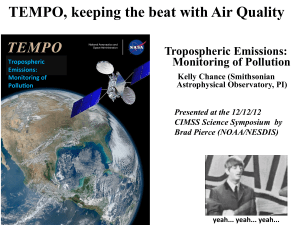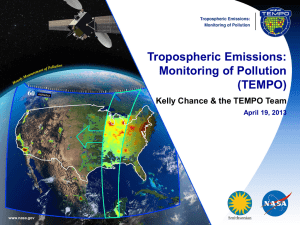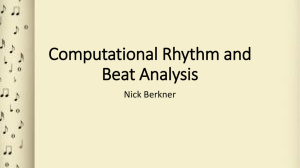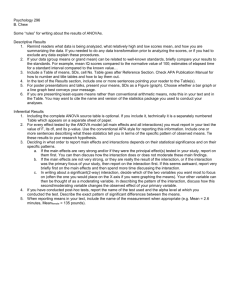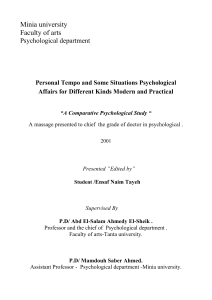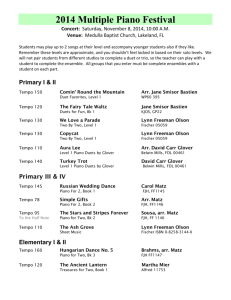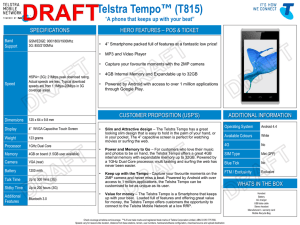TEMPO-Overview-April2013 - Harvard
advertisement
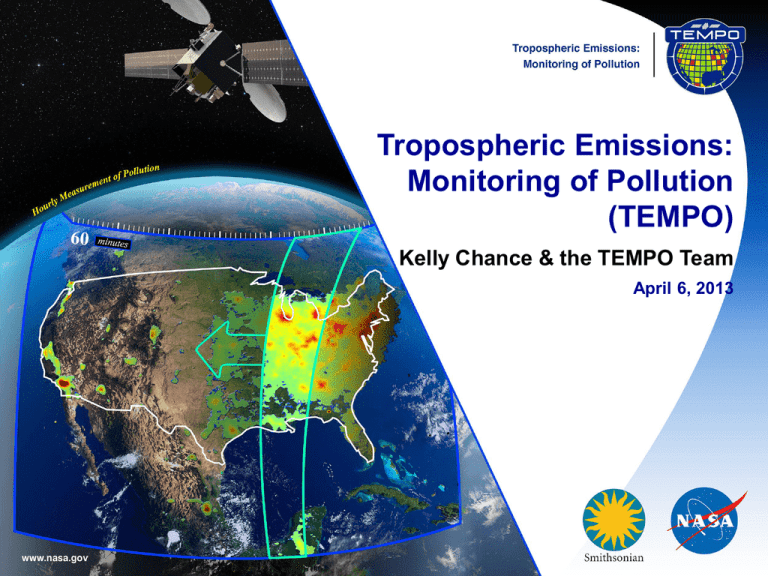
Tropospheric Emissions: Monitoring of Pollution (TEMPO) Kelly Chance & the TEMPO Team April 6, 2013 Hourly atmospheric pollution from geostationary Earth orbit PI: Kelly Chance, Smithsonian Astrophysical Observatory Instrument Development: Ball Aerospace Project Management: NASA LaRC Other Institutions: NASA GSFC, NOAA, EPA, NCAR, Harvard, UC Berkeley, St. Louis U, U Alabama Huntsville, U Nebraska International collaboration: Korea, ESA, Canada Selected Nov. 2012 through NASA’s first Earth Venture Instrument solicitation Instrument delivery September 2017 NASA will arrange hosting on commercial geostationary communications satellite with expected ~2018 launch Provides hourly daylight observations to capture rapidly varying emissions & chemistry important for air quality • UV/visible grating spectrometer to measure key elements in tropospheric ozone and aerosol pollution • Exploits extensive measurement heritage from LEO missions • Distinguishes boundary layer from free tropospheric & stratospheric ozone Aligned with Earth Science Decadal Survey recommendations • Makes most of the GEO-CAPE atmosphere measurements • Responds to the phased implementation recommendation of GEO-CAPE mission design team The North American geostationary component of an international constellation for air quality monitoring 4/6/13 2 Geostationary constellation coverage Sentinel-4 TEMPO GEMS Courtesy Jhoon Kim, Andreas Richter Policy-relevant science and environmental services enabled by common observations • Improved emissions, at common confidence levels, over industrialized Northern Hemisphere • Improved air quality forecasts and assimilation systems • Improved assessment, e.g., observations to support United Nations Convention on Long Range 4/6/13 Transboundary Air Pollution 3 TEMPO footprint, ground sample distance and field of regard Each 2 km × 4.5 km pixel is a 2K element spectrum from 290-690 nm GEO platform selected by NASA for viewing Greater North America 4/6/13 4 Typical spectra (from GOME-1) 4/6/13 5 TEMPO science questions 1. What are the temporal and spatial variations of emissions of gases and aerosols important for air quality and climate? 2. How do physical, chemical, and dynamical processes determine tropospheric composition and air quality over scales ranging from urban to continental, diurnally to seasonally? 3. How does air pollution drive climate forcing and how does climate change affect air quality on a continental scale? 4. How can observations from space improve air quality forecasts and assessments for societal benefit? 5. How does intercontinental transport affect air quality? 6. How do episodic events, such as wild fires, dust outbreaks, and volcanic eruptions, affect atmospheric composition and air quality? 4/6/13 6 TEMPO Science Traceability Matrix 4/6/13 7 TEMPO baseline products 4/6/13 8 Why geostationary? High temporal and spatial resolution Hourly NO2 surface concentration and integrated column calculated by CMAQ air quality model: Houston, TX, June 22-23, 2005 June 22 Hour of Day (UTC) June 23 LEO observations provide limited information on rapidly varying emissions, chemistry, & transport GEO will provide observations at temporal and spatial scales highly relevant to air quality processes 4/6/13 9 TEMPO instrument concept Measurement technique Imaging grating spectrometer measuring solar backscattered Earth radiance Spectral band & resolution: 290-690 nm @ 0.6 nm FWHM, 0.2 nm sampling 2-D, 2k×2k, detector images the full spectral range for each geospatial scene Field of Regard (FOR) and duty cycle Mexico City to the Canadian tar/oil sands, Atlantic to Pacific Instrument slit aligned N/S and swept across the FOR in the E/W direction, producing a radiance map of Greater North America in one hour Spatial resolution 2 km N/S × 4.5 km E/W native pixel resolution (9 km2) Co-add/cloud clear as needed for specific data products Standard data products and sampling rates NO2, O3, aerosol, and cloud products sampled hourly, including eXceL O3 for selected target areas H2CO, C2H2O2, SO2 sampled 3 times/day (hourly samples averaged to get S/N) Product spatial resolution ≤ 8 km N/S × 4.5 km E/W at center of domain Measurement requirements met up to 70o SZA for NO2, 50o for other standard products 4/6/13 10 TEMPO mission concept Geostationary orbit, operating on a commercial telecom satellite NASA will arrange launch and hosting services (per Earth Venture Instrument scope) 90-110o W preferred, 80-120o W acceptable Surveying COMSAT companies for specifications on satellite environment and launch manifests Hourly measurement and telemetry duty cycle for ≤70o SZA Hope to measure 20 hours/day TEMPO is low risk with significant space heritage All proposed TEMPO measurements have been made from low Earth orbit satellite instruments to the required precisions All TEMPO launch algorithms are implementations of currently operational algorithms NASA TOMS-type O3 SO2, NO2, H2CO, C2H2O2 from AMF-normalized cross sections Absorbing Aerosol Index, UV aerosol, Rotational Raman scattering cloud, UV index eXceL profile O3 for selected geographic targets Near-real-time products will be produced TEMPO research products will greatly extend science and applications Example research products: profile O3 for broad regions; BrO from AMF-normalized cross sections; height-resolved SO2; additional cloud/aerosol products; vegetation products Example higher-level products: pollution/AQ indices from standard products, city light maps 4/6/13 11 GOME, SCIA, OMI examples NO2 O3 strat SO2 Kilauea activity, source of the VOG event in Honolulu on 9 November 2004 HCHO trop 4/6/13 CHOCHO 12 NO2 over Los Angeles 4/6/13 13 Washington, DC coverage 4/6/13 14 Mexico City coverage 4/6/13 15 The End! 4/6/13 16
